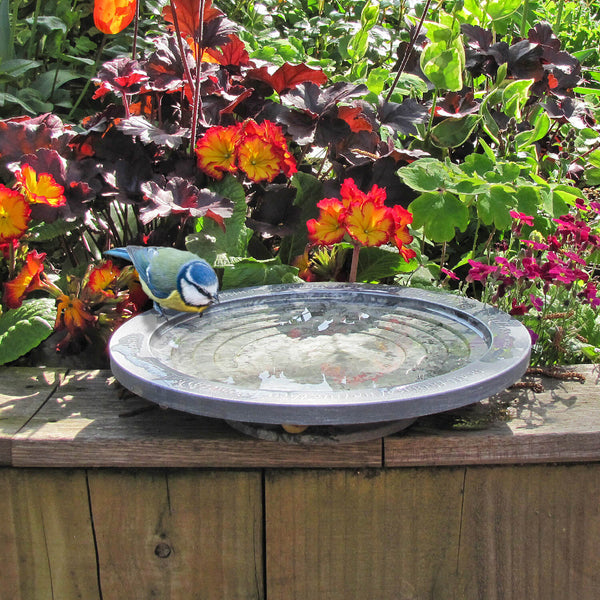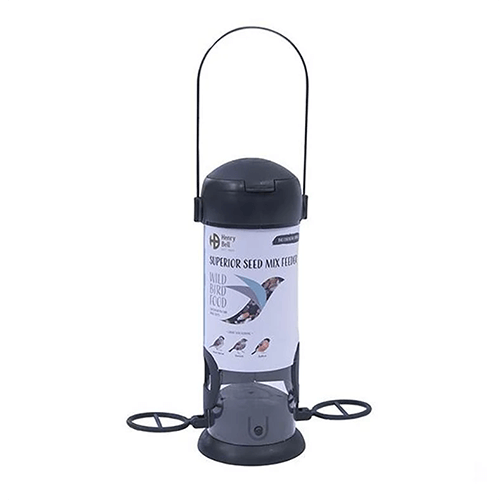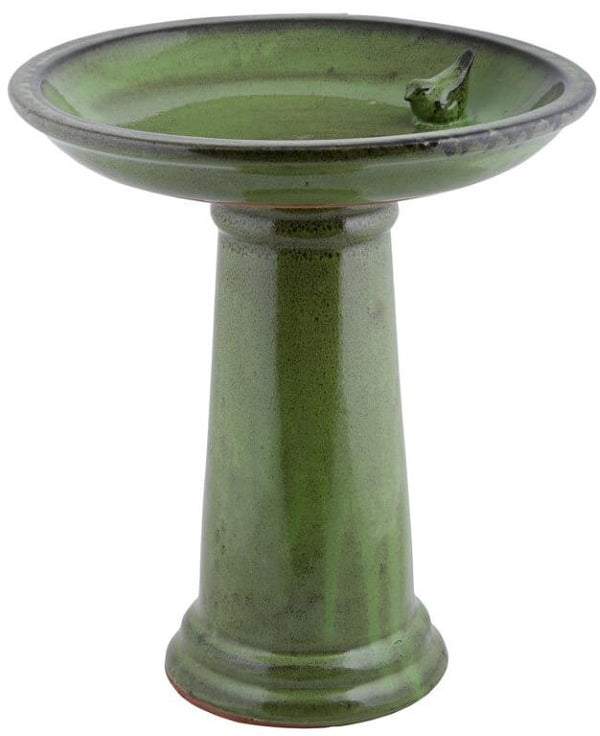Where do UK birds go in the winter?
When it starts getting colder and the days get shorter, lots of our common garden birds in the UK decide to take a break from the chilly weather and go on a winter vacation to somewhere warmer.
And guess where most of them head to? Africa! These common birds that usually hang out in our gardens during the summer brave the long-distance travel to enjoy some warm weather during the winter months.
What is migration?
Migration is a widespread phenomenon, observed by most birds, and is the seasonal movement of these animals from one region to another.
The primary drivers behind migration vary among species but often include factors such as changes in temperature, resource availability, and reproductive cycles.
Birds go on long journeys, travelling large distances along established routes known as flyways, driven by the need for suitable breeding grounds and abundant food sources.
Migration is a crucial survival strategy, allowing species to adapt to environmental factors and exploit diverse habitats throughout the year.
This intricate and often awe-inspiring occurrence shows the amazing ability of animals to navigate, adapt, and ensure their species' survive in the face of ever-changing conditions.

Why do British garden birds migrate?
Migration serves as a crucial aspect of life as a bird, linked to the survival and the breeding success of many bird species, including those commonly found in British gardens.
Many birds decision to migrate is driven by a range of factors, with key considerations including the availability of food, breeding, and the influence of prevailing climatic conditions.
Here is a list of UK birds and where they go in the winter months.
Swallows
Swallows, easily spotted by their diminutive size and a distinctive dark, glossy blue plumage, are small birds that are widespread across the northern hemisphere.
In the winter, these agile birds head to the south of Africa, where they spend the colder months of the year.
The temporary relocation to the south of Africa ensures their survival in harsh weather conditions.

House Martin
A House Martin is a small bird recognised by its distinctive white rump with a forked tail. These small birds spend a lot of time in the air collecting insects to eat.
These birds are summer migrants to the UK, so in the winter they head back to the warmer climates of Africa.
During the summer months, if you want to spot a House Martin, you'll find them hiding out across a range of places such as Urban and Suburban, Farmlands, Wetlands.
Swifts
Swifts are summer visitors that migrate back to Africa during the winter, completing a 3,400 mile trip twice a year.
During their breeding season, the Swifts come to the UK. Swifts are a bird that mate for life, so each year they return to the same site to lay eggs.
Swifts are unfortunately on the red list due to places for them to nest, in building and roofs, being renovated. We can help the Swifts out by putting up a bird nest and provide shelter for them.
Cuckoos
Cuckoos spend the winter in Africa and breed in the summer in the UK. Cuckoos are known as 'brood parasites' as they lay eggs in other species nests and leave their young to be raised by another bird. This means the Cuckoos migrate to Africa a lot earlier than other birds as they do not have to raise their babies.
The young Cuckoos migrate to Africa later on in the year.

Northern Wheatears
Northern Wheatears, a small bird with ground-dwelling habits, are fascinating species that engage in a migratory journey.
These birds breed within the United Kingdom, contributing to the local avian diversity but as the seasons shift, Northern Wheatears undertake an incredible migration, travelling huge distances to spend the winter months in the central regions of Africa.
Common Redstart
The Common Redstart is a bird identified by its orange-red tail, the Redstart can be found in woodland habitats and breeds in Europe and the UK.
In the wintering season, these tiny birds head to west Africa for the warmer climate.
ChiffChaff
With a body weight of less than a pound coin, ChiffChaffs can migrate as far Sub-Saharan Africa during the winter.
However, in recent years, this Warbler has been migrating less and tends to stay in the UK all year round, this is thought to be caused by the warmer climate meaning the birds can survive all year round.
The Rook
Belonging to the Crow family, the Rook is a bird that shows behaviours that set it apart from its close relatives such as the carrion crow.
In response to the most severe winter conditions, the Rook will migrate, unlike other members of its avian family, including the stationary carrion crow.

European Turtle Dove
The European Turtle Dove is a member of the Doves and Pigeons family. It is differentiated from the common pigeon and collared doves because of its tortoiseshell wings.
In July, these birds leave the UK to head for Sub-Saharan Africa.
Nightingale
During the winter months, the sweet song of the Nightingale is missed as it heads off to Africa for the colder season.
When they are in the UK, the best place to see them would be the south of England, but be warned, you are more likely to hear these little birds that see them.
UK winter bird species
House Sparrow
House sparrows (Passer domesticus) are small, sociable birds easily recognised by its appearance, characterised by brown and grey plumage with streaks on the back, complemented by a splash of black on the throat and chest.
One trait of house sparrows is their strong inclination to stay close to their place of origin throughout their lifetime. So throughout all seasons of the year, the home of the House Sparrow is the UK.
The House Sparrow's choice to remain non-migratory is influenced by a combination of factors, including the availability of food sources and the presence of suitable nesting sites.

Long tailed tit
Long tailed tit is a sedentary UK bird. Despite their small size, these birds are known for their impressive tail feathers that are longer than their bodies.
This sedentary lifestyle is driven by the bird's ability to find sufficient food resources and establish stable territories within the temperate climate of the UK, eliminating the need for extensive seasonal migrations.
The long tailed tit is a noisy and social birds, so you might be seeing the large flocks of this bird this winter!
Blue tit
You will see the distinctive yellow and blue colour of blue tits all year round in the UK as they spend all of their time in the UK. In fact, 98% of British gardens report seeing blue tits in the winter.
Interestingly, most Blue tits are strictly resident and don't move too far from where they hatched and with only 1.2% of the population moving more than 20km in the winter, you'll likely be seeing a blue tit or two in your garden this winter.
In the winter months, the blue tits diet is a mixture of seeds and insects, so to attract them into your garden get some bird friendly seeds, such as sunflower seeds, to go on your garden feeders.

Great tits (Parus major)
With a black head and green and yellow body, the great tit is similar to the blue tit and stays in the UK during the winter and scour gardens for food.
All year round, all different birds migrate from one place to another, flying incredible distances every time. From passer by's to summer migrants, most common birds will split their time between countries.
Many birds will spend the summer here and warmer months in Africa, but it differs from bird to bird.
Starling (Sturnus Vulgaris)
The Common Starling is a beautiful bird with black feathers that have a blue and green sheen in the sun.
Starlings spend winter in the UK, and those that are residents here don't migrate. However, the starlings that live in Northern Europe will migrate to the UK to spend winter here.
The UK provides a good environment during the winter, offering respite for Northern European starlings from the harsh conditions in their breeding grounds. Additionally, the urban and suburban areas of the UK offer a variety of food sources, including insects and berries which further attract these birds during the colder months.
The presence of bird feeders and other supplementary food provided by humans also contributes to the suitability of the UK as a winter destination for starling flocks.
Impact of climate change on migration patterns
Climate change is having a huge affect on the migration patterns of birds. From meaning birds have to travel further to reducing food sources, climate change is a huge risk to the survival of all species of migrating birds.
Rising sea levels caused by climate change is increasing the distance birds have to travel in order to reach their destination, this would also mean birds would have to stop more frequently (something that is essential to their journeys), the problem with this is that human development is reducing suitable places for these birds to stop which means they would have to go longer with out food and water.
Research found that across all birds, migrations timings are slowly changing. For example North America based birds are heading off on their migration two days early each year, although only a small shift, it can have big effects on their journey.
Birds may be leaving earlier, but the emergence of their food sources is not changing at the same rate which may mean birds are not getting as much food as they need, it could also lead them to miss peak breeding times, threatening the survival of the species.

Winter bird watching tips
During the winter, you will be able to spot some of the most amazing winter visitors and the natural occurrences that they bring with them. From starling murmurations to seeing a range of winter ducks, the winter is a great time to get out and bird watch.
Here are a few of our top tips for winter bird watching:
1. Wear warm clothes
The winter can bring some cold weather conditions, which is why when going winter bird watching it is incredibly important to wrap yourself up and keep warm.
You could be outside for a long time so it's important to wear those thermals and bring a flask of hot tea with you.
2. Bring the right gear
Bringing the right gear is a key part of winter bird watching and it allows you to see all of the birds in their full glory.
With a pair of binoculars and a bird identification guide as the basics, this is all you need to get started with bird watching.
3. The best places to go
The best places to view our winter visitors are local wildlife reserves, such as RSPB and Wildlife Trust centres, as these well kept areas tend to attract them.
A great bird watching spot would also be local estuaries and coastal areas, where you'll find winter ducks and waders. If you can spot a reed bed, you may be lucky enough to see a starling murmuration just before dusk.
The perfect time for bird watching depends on what you are going to spot. If the bird you are looking for lives in woodlands and gardens, they will be most active just after dawn. If they live around estuaries, look at tide times because low tide (for feeding) and high tide (for roosting) are the best times.
4. Bringing birds to your garden
If leaving your warm house seems too much, bring the garden birds to you and create a safe space for birds to hang out in your back yard.
< Set up bird feeders and a bird bath in your garden.
< Don't cut back grasses and bushes as these seeds are a valuable food source for birds.
If you've got all of this, you'll be sure to get garden birds, so sit back and watch patiently!

How individuals can contribute to bird conservation in the winter
During the winter months, the birds that migrate to the UK, or those that choose to stay, will need some support in finding food and houses, which is why it is so important to have bird feeders and bird houses in your garden.
Not only will you be helping garden birds and winter visitors survive, you'll also have the chance to spot all kinds of different birds in your garden.










